Answered step by step
Verified Expert Solution
Question
1 Approved Answer
identify how early adaptation to Chinese ownership, capital, and labor system shaped Lenovo's growth and globalization. Culture, the first element of the CAGE framework presented
identify how early "adaptation" to Chinese ownership, capital, and labor system shaped Lenovo's growth and globalization. 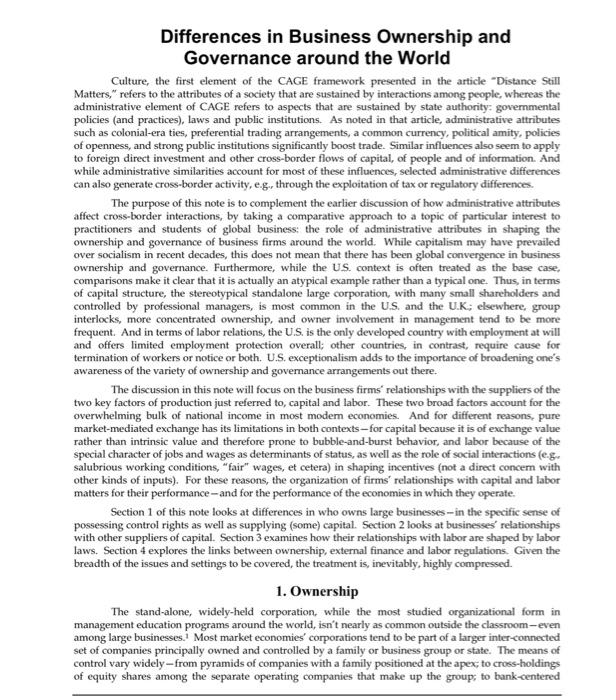
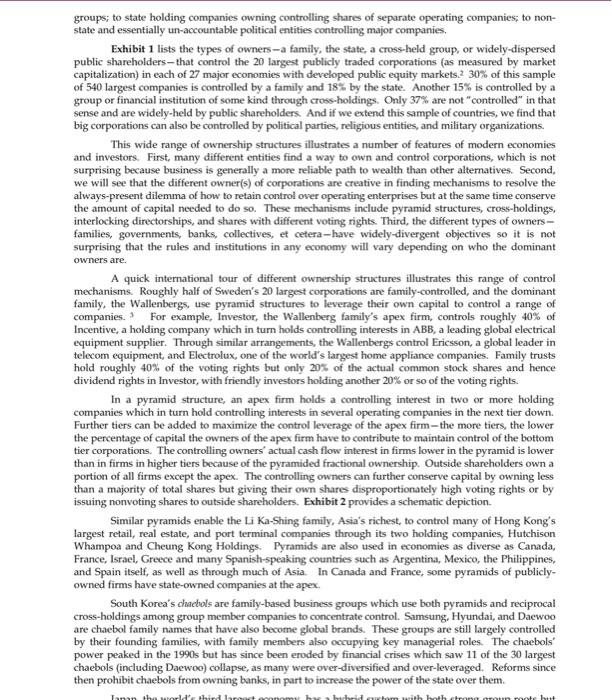
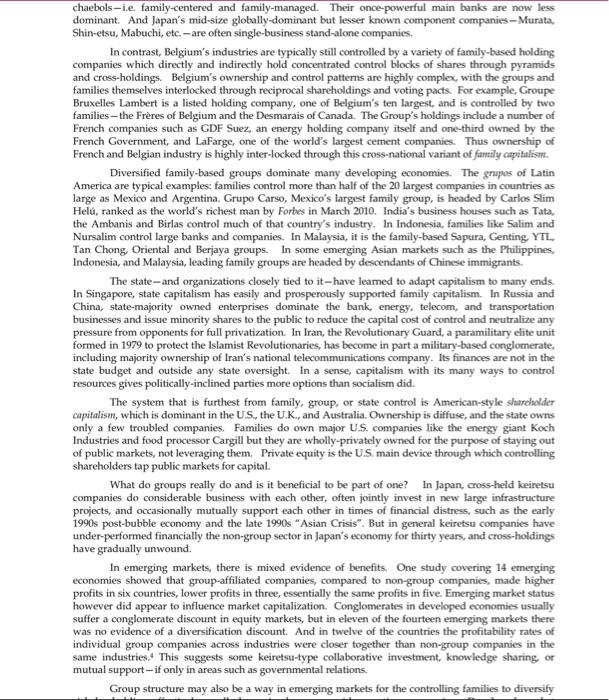
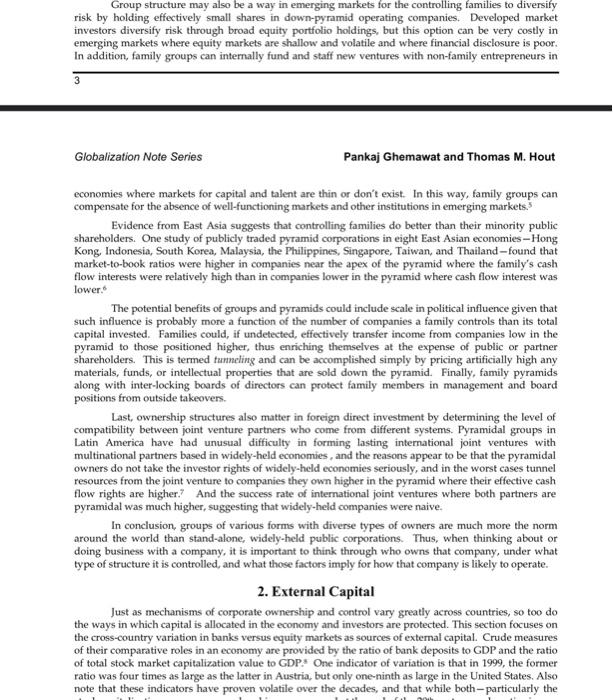
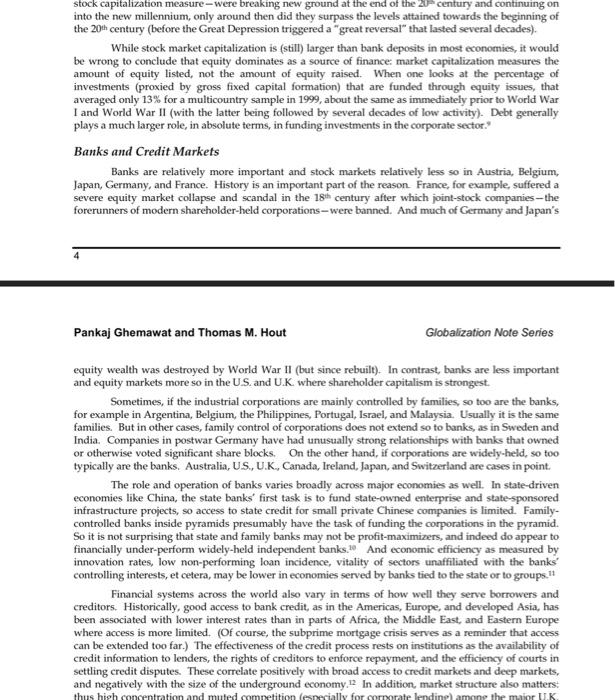
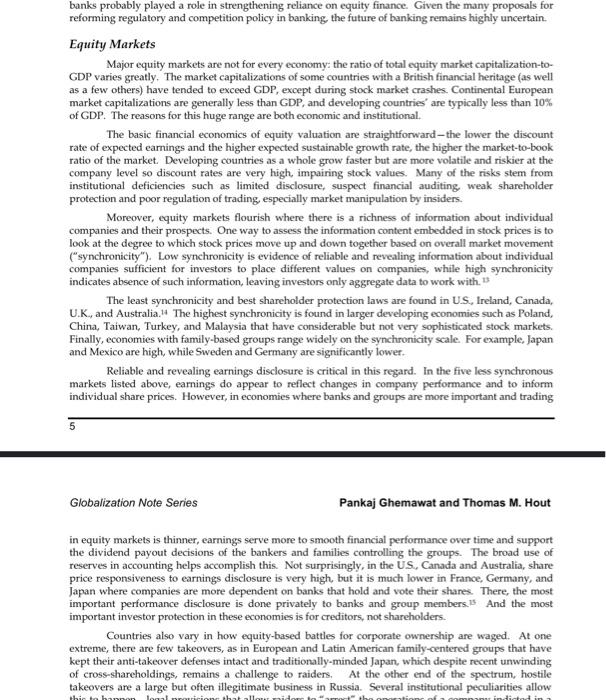
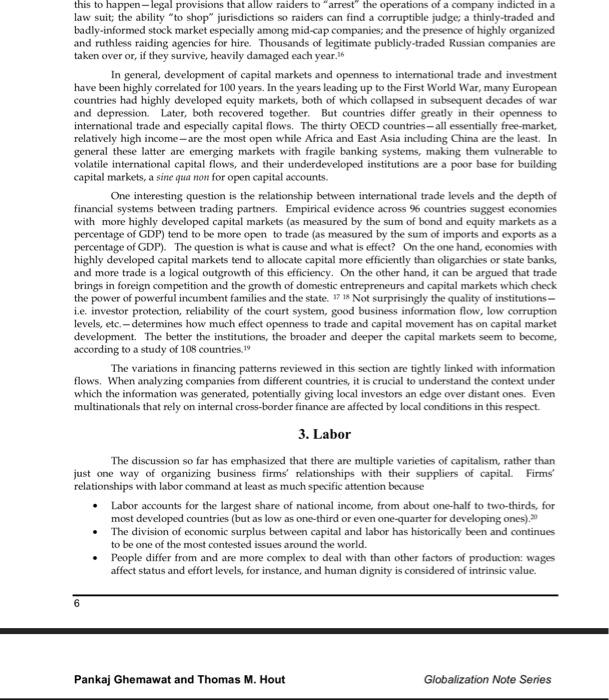
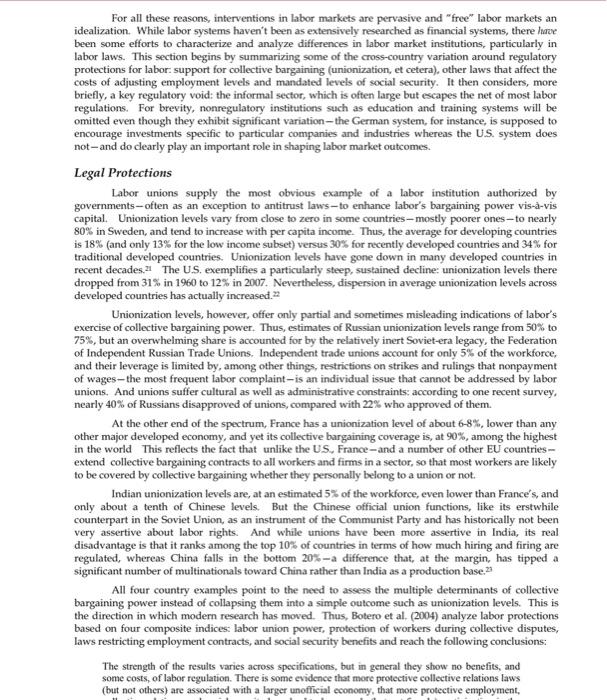
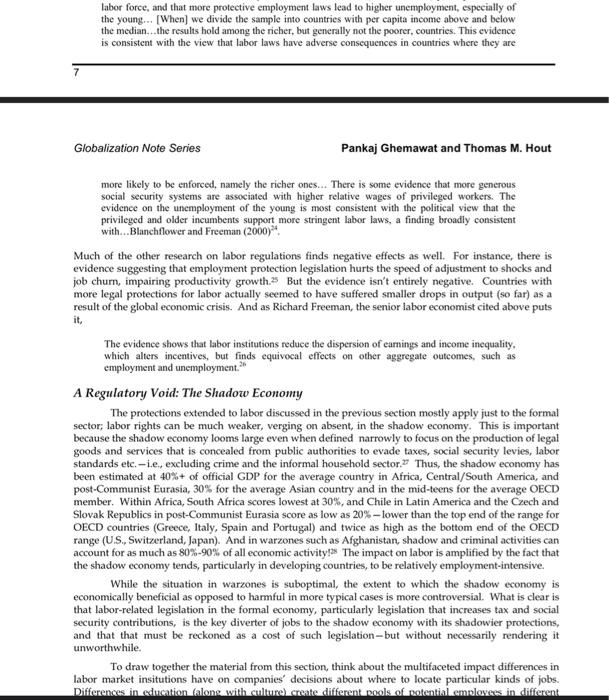
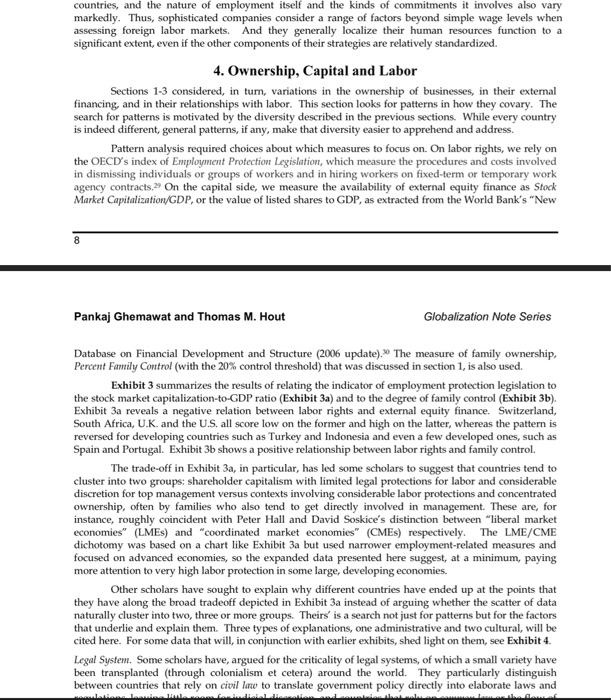
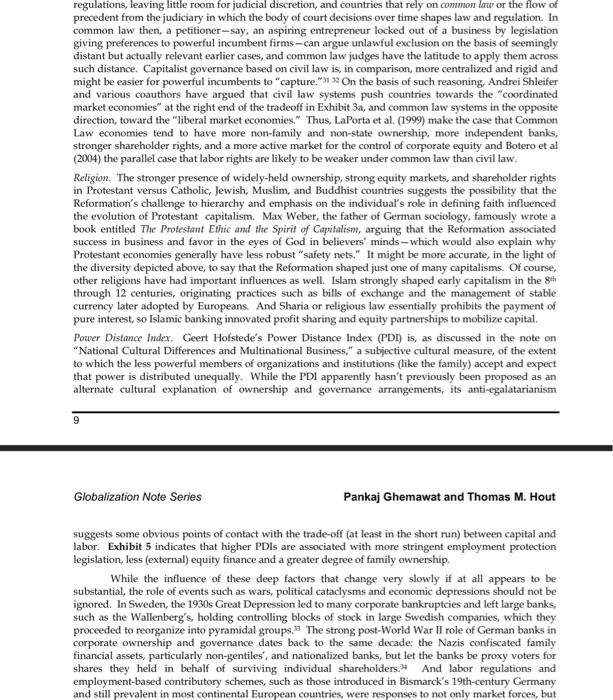
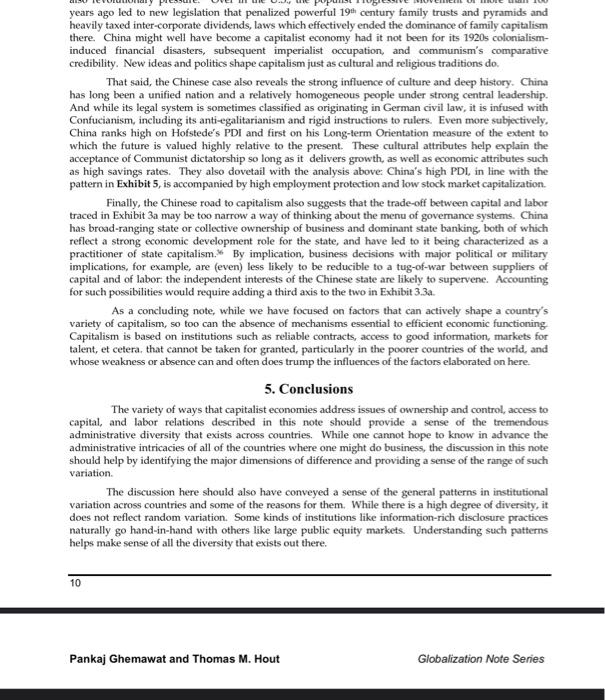
Culture, the first element of the CAGE framework presented in the article "Distance Still Matters,". refers to the attributes of a society that are sustained by interactions among people, whereas the administrative element of CAGE refers to aspects that are sustained by state authority: governmental policies (and practices), laws and public institutions. As noted in that article, administrative attributes such as colonial-era ties, preferential trading arrangements, a common currency, political amity, policies of openness, and strong public institutions significantly boost trade. Similar influences also seem to apply to foreign direct investment and other cross-border flows of capital, of people and of information. And while administrative similarities account for most of these influences, selected administrative differences can also generate cross-border activity, eg, through the exploitation of tax or regulatory differences. The purpose of this note is to complement the earlier discussion of how administrative attributes affect cross-border interactions, by taking a comparative approach to a topic of particular interest to practitioners and students of global business: the role of administrative attributes in shaping the ownership and governance of business firms around the world. While capitalism may have prevailed over socialism in recent decades, this does not mean that there has been global convergence in business ownership and governance. Furthermore, while the US. context is often treated as the base case, comparisons make it clear that it is actually an atypical example rather than a typical one. Thus, in terms of capital structure, the stereotypical standalone large corporation, with many small shareholders and controlled by professional managers, is most common in the U.S. and the U.K; elsewhere, group interlocks, more concentrated ownership, and owner involvement in management tend to be more frequent. And in terms of labor relations, the U.S. is the only developed country with employment at will and offers limited employment protection overall; other countries, in contrast, require cause for termination of workers or notice or both. U.S. exceptionalism adds to the importance of broadening one's awareness of the variety of ownership and governance arrangements out there. The discussion in this note will focus on the business firms" relationships with the suppliers of the two key factors of production just referred to, capital and labor. These two broad factors account for the overwhelming bulk of national income in most modem economies. And for different reasons, pure market-mediated exchange has its limitations in both contexts - for capital because it is of exchange value rather than intrinsic value and therefore prone to bubble-and-burst behavior, and labor because of the special character of jobs and wages as determinants of status, as well as the role of social interactions (e.g. salubrious working conditions, "fair" wages, et cetera) in shaping incentives (not a direct concem with other kinds of inputs). For these reasons, the organization of firms' relationships with capital and labor matters for their performance - and for the performance of the economies in which they operate. Section 1 of this note looks at differences in who owns large businesses - in the specific sense of possessing control rights as well as supplying (some) capital. Section 2 looks at businesses' relationships with other suppliers of capital. Section 3 examines how their relationships with labor are shaped by labor laws. Section 4 explores the links between ownership, external finance and labor regulations. Given the breadth of the issues and settings to be covered, the treatment is, inevitably, highly compressed. 1. Ownership The stand-alone, widely-held corporation, while the most studied organizational form in management education programs around the world, isn't nearly as common outside the classroom-even among large businesses.1 Most market economies' corporations tend to be part of a larger inter-connected set of companies principally owned and controlled by a family or business group or state. The means of control vary widely - from pyramids of companies with a family positioned at the apex; to cross-holdings of equity shares among the separate operating companies that make up the group; to bank-centered groups; to state holding companies owning controlling shares of separate operating companies; to nonstate and essentially un-accountable political entities controlling major companies. Exhibit 1 lists the types of owners - a family, the state, a cross-held group, or widely-dispersed public shareholders - that control the 20 largest publicly traded corporations (as measured by market capitalization) in each of 27 major economies with developed public equity markets. 30% of this sample of 540 largest companies is controlled by a family and 18% by the state. Another 15% is controlled by a group or financial institution of some kind through cross-holdings. Only 37% are not "controlled" in that sense and are widely-held by public shareholders. And if we extend this sample of countries, we find that big corporations can also be controlled by political parties, religious entities, and military organizations. This wide range of ownership structures illustrates a number of features of modern economies and investors. First, many different entities find a way to own and control corporations, which is not surprising because business is generally a more reliable path to wealth than other alternatives. Second, we will see that the different owner(s) of corporations are creative in finding mechanisms to resolve the always-present dilemma of how to retain control over operating enterprises but at the same time conserve the amount of capital needed to do so. These mechanisms include pyramid structures, cross-holdings, interlocking directorships, and shares with different voting rights. Third, the different types of owners families, governments, banks, collectives, et cetera-have widely-divergent objectives so it is not surprising that the rules and institutions in any economy will vary depending on who the dominant owners are. A quick international tour of different ownership structures illustrates this range of control mechanisms. Roughly half of Sweden's 20 largest corporations are family-controlled, and the dominant family, the Wallenbergs, use pyramid structures to leverage their own capital to control a range of companies. " For example, Investor, the Wallenberg family's apex firm, controls roughly 40% of Incentive, a holding company which in tum holds controlling interests in ABB, a leading global electrical equipment supplier. Through similar arrangements, the Wallenbergs control Ericsson, a global leader in telecom equipment, and Electrolux, one of the world's largest home appliance companies. Family trusts hold roughly 40% of the voting rights but only 20% of the actual common stock shares and hence dividend rights in Investor, with friendly investors holding another 20% or so of the voting rights. In a pyramid structure, an apex firm holds a controlling interest in two or more holding companies which in turn hold controlling interests in several operating companies in the next tier down. Further tiers can be added to maximize the control leverage of the apex firm-the more tiers, the lower the percentage of capital the owners of the apex firm have to contribute to maintain control of the bottom tier corporations. The controlling owners' actual cash flow interest in firms lower in the pyramid is lower than in firms in higher tiers because of the pyramided fractional ownership. Outside shareholders own a portion of all firms except the apex. The controlling owners can further conserve capital by owning less than a majority of total shares but giving their own shares disproportionately high voting rights or by issuing nonvoting shares to outside shareholders. Exhibit 2 provides a schematic depiction. Similar pyramids enable the Li Ka-Shing family, Asia's richest, to control many of Hong Kong's largest retail, real estate, and port terminal companies through its two holding companies, Hutchison Whampoa and Cheung Kong Holdings. Pyramids are also used in economies as diverse as Canada, France, Israel, Greece and many Spanish-speaking countries such as Argentina, Mexico, the Philippines. and Spain itself, as well as through much of Asia. In Canada and France, some pyramids of publiclyowned firms have state-owned companies at the apex. South Korea's chachols are family-based business groups which use both pyramids and reciprocal cross-holdings among group member companies to concentrate control. Samsung, Hyundai, and Daewoo are chaebol family names that have also become global brands. These groups are still largely controlled by their founding families, with family members also occupying key managerial roles. The chaebols' power peaked in the 1990 s but has since been eroded by financial crises which saw 11 of the 30 largest chaebols (including Daewoo) collapse, as many were over-diversified and over-leveraged. Reforms since then prohibit chaebols from owning banks, in part to increase the power of the state over them. chaebols-i.e. family-centered and family-managed. Their once-powerful main banks are now less dominant. And Japan's mid-size globally-dominant but lesser known component companies-Murata, Shin-etsu, Mabuchi, etc-are often single-business stand-alone companies. In contrast, Belgium's industries are typically still controlled by a variety of family-based holding companies which directly and indirectly hold concentrated control blocks of shares through pyramids and cross-holdings. Belgium's ownership and control patterns are highly complex, with the groups and families themselves interlocked through reciprocal shareholdings and voting pacts. For example, Groupe Bruxelles Lambert is a listed holding company, one of Belgium's ten largest, and is controlled by two families - the Frres of Belgium and the Desmarais of Canada. The Group's holdings include a number of French companies such as GDF Suez, an energy holding company itself and one-third owned by the French Government, and LaFarge, one of the world's largest cement companies. Thus ownership of French and Belgian industry is highly inter-locked through this cross-national variant of fumtily cmpitulism. Diversified family-based groups dominate many developing economies. The gnupos of Latin America are typical examples: families control more than half of the 20 largest companies in countries as large as Mexico and Argentina. Grupo Carso, Mexico's largest family group, is headed by Carlos Slim Helu, ranked as the world's richest man by Forbes in March 2010. India's business houses such as Tata, the Ambanis and Birlas control much of that country's industry. In Indonesia, families like Salim and Nursalim control large banks and companies. In Malaysia, it is the family-based Sapura, Genting, YTL. Tan Chong, Oriental and Berjaya groups. In some emerging Asian markets such as the Philippines, Indonesia, and Malaysia, leading family groups are headed by descendants of Chinese immigrants. The state-and organizations closely tied to it-have leamed to adapt capitalism to many ends. In Singapore, state capitalism has easily and prosperously supported family capitalism. In Russia and China, state-majority owned enterprises dominate the bank, energy, telecom, and transportation businesses and issue minority shares to the public to reduce the capital cost of control and neutralize any pressure from opponents for full privatization. In Iran, the Revolutionary Guard, a paramilitary elite unit formed in 1979 to protect the Islamist Revolutionaries, has become in part a military-based conglomerate, including majority ownership of Iran's national telecommunications company. Its finances are not in the state budget and outside any state oversight. In a sense, capitalism with its many ways to control resources gives politically-inclined parties more options than socialism did. The system that is furthest from family, group, or state control is American-style sharroblder capitalism, which is dominant in the US., the U.K., and Australia. Ownership is diffuse, and the state owns only a few troubled companies. Families do own major U.S. companies like the energy giant Koch Industries and food processor Cargill but they are wholly-privately owned for the purpose of staying out of public markets, not leveraging them. Private equity is the U.S. main device through which controlling shareholders tap public markets for capital. What do groups really do and is it beneficial to be part of one? In Japan, cross-held keiretsu companies do considerable business with each other, often jointly invest in new large infrastructure projects, and occasionally mutually support each other in times of financial distress, such as the early 1990 s post-bubble economy and the late 1990 s "Asian Crisis". But in general keiretsu companies have. under-performed financially the non-group sector in Japan's economy for thirty years, and cross-holdings have gradually unwound. In emerging markets, there is mixed evidence of benefits. One study covering 14 emerging economies showed that group-affiliated companies, compared to non-group companies, made higher profits in six countries, lower profits in three, essentially the same profits in five. Emerging market status however did appear to influence market capitalization. Conglomerates in developed economies usually suffer a conglomerate discount in equity markets, but in eleven of the fourteen emerging markets there was no evidence of a diversification discount. And in twelve of the countries the profitability rates of individual group companies across industries were closer together than non-group companies in the same industries." This suggests some keiretsu-type collaborative investment, knowledge sharing, or mutual support-if only in areas such as governmental relations. Group structure may also be a way in emerging markets for the controlling families to diversify Group structure may also be a way in emerging markets for the controlling families to diversify risk by holding effectively small shares in down-pyramid operating companies. Developed market investors diversify risk through broad equity portfolio holdings, but this option can be very costly in emerging markets where equity markets are shallow and volatile and where financial disclosure is poor. In addition, family groups can internally fund and staff new ventures with non-family entrepreneurs in 3 Globalization Note Series Pankaj Ghemawat and Thomas M. Hout economies where markets for capital and talent are thin or don't exist. In this way, family groups can compensate for the absence of well-functioning markets and other institutions in emerging markets. 5 Evidence from East Asia suggests that controlling families do better than their minority public shareholders. One study of publicly traded pyramid corporations in eight East Asian economies - Hong Kong, Indonesia, South Korea, Malaysia, the Philippines, Singapore, Taiwan, and Thailand-found that market-to-book ratios were higher in companies near the apex of the pyramid where the family's cash flow interests were relatively high than in companies lower in the pyramid where cash flow interest was lower." The potential benefits of groups and pyramids could include scale in political influence given that such influence is probably more a function of the number of companies a family controls than its total capital invested. Families could, if undetected, effectively transfer income from companies low in the pyramid to those positioned higher, thus enriching themselves at the expense of public or partner shareholders. This is termed tumeling and can be accomplished simply by pricing artificially high any materials, funds, or intellectual properties that are sold down the pyramid. Finally, family pyramids along with inter-locking boards of directors can protect family members in management and board positions from outside takeovers. Last, ownership structures also matter in foreign direct investment by determining the level of compatibility between joint venture partners who come from different systems. Pyramidal groups in Latin America have had unusual difficulty in forming lasting international joint ventures with multinational partners based in widely-held economies, and the reasons appear to be that the pyramidal owners do not take the investor rights of widely-held economies seriously, and in the worst cases tunnel resources from the joint venture to companies they own higher in the pyramid where their effective cash flow rights are higher. And the success rate of international joint ventures where both partners are pyramidal was much higher, suggesting that widely-held companies were naive. In conclusion, groups of various forms with diverse types of owners are much more the norm around the world than stand-alone, widely-held public corporations. Thus, when thinking about or doing business with a company, it is important to think through who owns that company, under what type of structure it is controlled, and what those factors imply for how that company is likely to operate. 2. External Capital Just as mechanisms of corporate ownership and control vary greatly across countries, so too do the ways in which capital is allocated in the economy and investors are protected. This section focuses on the cross-country variation in banks versus equity markets as sources of external capital. Crude measures of their comparative roles in an economy are provided by the ratio of bank deposits to GDP and the ratio of total stock market capitalization value to GDP.: One indicator of variation is that in 1999, the former ratio was four times as large as the latter in Austria, but only one-ninth as large in the United States. Also note that these indicators have proven volatile over the decades, and that while both-particularly the stock capitalization measure - were breaking new ground at the end of the 20 - century and continuing on into the new millennium, only around then did they surpass the levels attained towards the beginning of the 20th century (before the Great Depression triggered a "great reversal" that lasted several decades). While stock market capitalization is (still) larger than bank deposits in most economies, it would be wrong to conclude that equity dominates as a source of finance: market capitalization measures the amount of equity listed, not the amount of equity raised. When one looks at the percentage of investments (proxied by gross fixed capital formation) that are funded through equity issues, that averaged only 13\% for a multicountry sample in 1999 , about the same as immediately prior to World War I and World War II (with the latter being followed by several decades of low activity). Debt generally plays a much larger role, in absolute terms, in funding investments in the corporate sector." Banks and Credit Markets Banks are relatively more important and stock markets relatively less so in Austria, Belgium, Japan, Germany, and France. History is an important part of the reason. France, for example, suffered a severe equity market collapse and scandal in the 18th century after which joint-stock companies-the forerunners of modern shareholder-held corporations - were banned. And much of Germany and Japan's Pankaj Ghemawat and Thomas M. Hout Globalization Note Series equity wealth was destroyed by World War II (but since rebuilt). In contrast, banks are less important and equity markets more so in the U.S. and U.K. where shareholder capitalism is strongest. Sometimes, if the industrial corporations are mainly controlled by families, so too are the banks, for example in Argentina, Belgium, the Philippines, Portugal, Israel, and Malaysia. Usually it is the same families. But in other cases, family control of corporations does not extend so to banks, as in Sweden and India. Companies in postwar Germany have had unusually strong relationships with banks that owned or otherwise voted significant share blocks. On the other hand, if corporations are widely-held, so too typically are the banks. Australia, US,, U.K., Canada, Ireland, Japan, and Switzerland are cases in point. The role and operation of banks varies broadly across major economies as well. In state-driven economies like China, the state banks' first task is to fund state-owned enterprise and state-sponsored infrastructure projects, so access to state credit for small private Chinese companies is limited. Familycontrolled banks inside pyramids presumably have the task of funding the corporations in the pyramid. So it is not surprising that state and family banks may not be profit-maximizers, and indeed do appear to financially under-perform widely-held independent banks. And economic efficiency as measured by innovation rates, low non-performing loan incidence, vitality of sectors unaffiliated with the banks' controlling interests, et cetera, may be lower in economies served by banks tied to the state or to groups 11 Financial systems across the world also vary in terms of how well they serve borrowers and creditors. Historically, good access to bank credit, as in the Americas, Europe, and developed Asia, has been associated with lower interest rates than in parts of Africa, the Middle East, and Eastern Europe where access is more limited. (Of course, the subprime mortgage crisis serves as a reminder that access can be extended too far.) The effectiveness of the credit process rests on institutions as the availability of credit information to lenders, the rights of ereditors to enforce repayment, and the efficiency of courts in settling credit disputes. These correlate positively with broad access to credit markets and deep markets, and negatively with the size of the underground economy.12 In addition, market structure also matters: Equity Markets Major equity markets are not for every economy: the ratio of total equity market capitalization-toGDP varies greatly. The market capitalizations of some countries with a British financial heritage (as well as a few others) have tended to exceed GDP, except during stock market crashes. Continental European market capitalizations are generally less than GDP, and developing countries' are typically less than 10\% of GDP. The reasons for this huge range are both economic and institutional. The basic financial economics of equity valuation are straightforward-the lower the discount rate of expected earnings and the higher expected sustainable growth rate, the higher the market-to-book ratio of the market. Developing countries as a whole grow faster but are more volatile and riskier at the company level so discount rates are very high, impairing stock values. Many of the risks stem from institutional deficiencies such as limited disclosure, suspect financial auditing, weak shareholder protection and poor regulation of trading, especially market manipulation by insiders. Moreover, equity markets flourish where there is a richness of information about individual companies and their prospects. One way to assess the information content embedded in stock prices is to look at the degree to which stock prices move up and down together based on overall market movement ("synchronicity"). Low synchronicity is evidence of reliable and revealing information about individual companies sufficient for investors to place different values on companies, while high synchronicity indicates absence of such information, leaving investors only aggregate data to work with. 13 The least synchronicity and best shareholder protection laws are found in U.S, Ireland, Canada, U.K., and Australia."4 The highest synchronicity is found in larger developing economies such as Poland, China, Taiwan, Turkey, and Malaysia that have considerable but not very sophisticated stock markets. Finally, economies with family-based groups range widely on the synchronicity scale. For example, Japan and Mexico are high, while Sweden and Germany are significantly lower. Reliable and revealing earnings disclosure is critical in this regard. In the five less synchronous markets listed above, earnings do appear to reflect changes in company performance and to inform individual share prices. However, in economies where banks and groups are more important and trading 5 Globalization Note Series Pankaj Ghemawat and Thomas M. Hout in equity markets is thinner, earnings serve more to smooth financial performance over time and support the dividend payout decisions of the bankers and families controlling the groups. The broad use of reserves in accounting helps accomplish this. Not surprisingly, in the US, Canada and Australia, share price responsiveness to earnings disclosure is very high, but it is much lower in France, Germany, and Japan where companies are more dependent on banks that hold and vote their shares. There, the most important performance disclosure is done privately to banks and group members.15 And the most important investor protection in these economies is for creditors, not shareholders. Countries also vary in how equity-based battles for corporate ownership are waged. At one extreme, there are few takeovers, as in European and Latin American family-centered groups that have kept their anti-takeover defenses intact and traditionally-minded Japan, which despite recent unwinding of cross-shareholdings, remains a challenge to raidens. At the other end of the spectrum, hostile takeovers are a large but often illegitimate business in Russia. Several institutional peculiarities allow this to happen-legal provisions that allow raiders to "arrest" the operations of a company indicted in a law suit; the ability "to shop" jurisdictions so raiders can find a corruptible judge; a thinly-traded and badly-informed stock market especially among mid-cap companies; and the presence of highly organized and ruthless raiding agencies for hire. Thousands of legitimate publicly-traded Russian companies are taken over or, if they survive, heavily damaged each year. 16 In general, development of capital markets and openness to intemational trade and investment have been highly correlated for 100 years. In the years leading up to the First World War, many European countries had highly developed equity markets, both of which collapsed in subsequent decades of war and depression. Later, both recovered together. But countries differ greatly in their openness to international trade and especially capital flows. The thirty OECD countries-all essentially free-market, relatively high income - are the most open while Africa and East Asia including China are the least. In general these latter are emerging markets with fragile banking systems, making them vulnerable to volatile international capital flows, and their underdeveloped institutions are a poor base for building capital markets, a sine qua non for open capital accounts. One interesting question is the relationship between international trade levels and the depth of financial systems between trading partners. Empirical evidence across 96 countries suggest economies with more highly developed capital markets (as measured by the sum of bond and equity markets as a percentage of GDP) tend to be more open to trade (as measured by the sum of imports and exports as a percentage of GDP). The question is what is cause and what is effect? On the one hand, economies with highly developed capital markets tend to allocate capital more efficiently than oligarchies or state banks, and more trade is a logical outgrowth of this efficiency. On the other hand, it can be argued that trade brings in foreign competition and the growth of domestic entrepreneurs and capital markets which check the power of powerful incumbent families and the state. 1718 Not surprisingly the quality of institutionsi.e. investor protection, reliability of the court system, good business information flow, low corruption levels, etc- - determines how much effect openness to trade and capital movement has on capital market development. The better the institutions, the broader and deeper the capital markets seem to become, according to a study of 108 countries. 19 The variations in financing patterns reviewed in this section are tightly linked with information flows. When analyzing companies from different countries, it is crucial to understand the context under which the information was generated, potentially giving local investors an edge over distant ones. Even multinationals that rely on internal cross-border finance are affected by local conditions in this respect. 3. Labor The discussion so far has emphasized that there are multiple varieties of capitalism, rather than just one way of organizing business firms' relationships with their suppliers of capital. Firms' relationships with labor command at least as much specific attention because - Labor accounts for the largest share of national income, from about one-half to two-thirds, for most developed countries (but as low as one-third or even one-quarter for developing ones) 20 - The division of economic surplus between capital and labor has historically been and continues to be one of the most contested issues around the world. - People differ from and are more complex to deal with than other factors of production: wages affect status and effort levels, for instance, and human dignity is considered of intrinsic value. For all these reasons, interventions in labor markets are pervasive and "free" labor markets an idealization. While labor systems haven't been as extensively researched as financial systems, there have been some efforts to characterize and analyze differences in labor market institutions, particularly in labor laws. This section begins by summarizing some of the cross-country variation around regulatory protections for labor: support for collective bargaining (unionization, et cetera), other laws that affect the costs of adjusting employment levels and mandated levels of social security. It then considers, more briefly, a key regulatory void: the informal sector, which is often large but escapes the net of most labor regulations. For brevity, nonregulatory institutions such as education and training systems will be omitted even though they exhibit significant variation-the German system, for instance, is supposed to encourage investments specific to particular companies and industries whereas the U.S. system does not-and do clearly play an important role in shaping labor market outcomes. Legal Protections Labor unions supply the most obvious example of a labor institution authorized by governments-often as an exception to antitrust laws - to enhance labor's bargaining power vis--vis capital. Unionization levels vary from close to zero in some countries-mostly poorer ones-to nearly 80% in Sweden, and tend to increase with per capita income. Thus, the average for developing countries is 18% (and only 13% for the low income subset) versus 30% for necently developed countries and 34% for traditional developed countries. Unionization levels have gone down in many developed countries in recent decades.z1 The U.S, exemplifies a particularly steep, sustained decline: unionization levels there dropped from 31% in 1960 to 12% in 2007 . Nevertheless, dispersion in average unionization levels across developed countries has actually increased. 22 Unionization levels, however, offer only partial and sometimes misleading indications of labor's exercise of collective bargaining power. Thus, estimates of Russian unionization levels range from 50% to 75%, but an overwhelming share is accounted for by the relatively inert Soviet-era legacy, the Federation of Independent Russian Trade Unions. Independent trade unions account for only 5% of the workforce. and their leverage is limited by, among other things, restrictions on strikes and rulings that nonpayment of wages - the most frequent labor complaint - is an individual issue that cannot be addressed by labor unions. And unions suffer cultural as well as administrative constraints: according to one recent survey, nearly 40% of Russians disapproved of unions, compared with 22% who approved of them. At the other end of the spectrum, France has a unionization level of about 68%, lower than any other major developed economy, and yet its collective burgaining coverage is, at 90%, among the highest in the world This reflects the fact that unlike the US. France-and a number of other EU countries extend collective bargaining contracts to all workers and firms in a sector, so that most workers are likely to be covered by collective bargaining whether they personally belong to a union or not. Indian unionization levels are, at an estimated 5% of the workforce, even lower than France's, and only about a tenth of Chinese levels. But the Chinese official union functions, like its erstwhile counterpart in the Soviet Union, as an instrument of the Communist Party and has historically not been very assertive about labor rights. And while unions have been more assertive in India, its real disadvantage is that it ranks among the top 10% of countries in terms of how much hiring and firing are regulated, whereas China falls in the bottom 20%a difference that, at the margin, has tipped a significant number of multinationals toward China rather than India as a production base.23 All four country examples point to the need to assess the multiple determinants of collective bargaining power instead of collapsing them into a simple outcome such as unionization levels. This is the direction in which modern research has moved. Thus, Botero et al. (2004) analyze labor protections based on four composite indices: labor union power, protection of workers during collective disputes, laws restricting employment contracts, and social security benefits and reach the following conclusions: The strength of the results varies across specifications, but in general they show no benefits, and some costs, of labor regulation. There is some evidence that more protective collective relations laws (but not others) are associated with a larger unofiicial economy, that more protective employment, labor force, and that more protective employment laws lead to higher unemployment, especially of the young... [When] we divide the sample into countries with per capita income above and below the median...the results hold among the richer, but generally not the poorer, countries. This evidence is consistent with the view that labor laws have adverse consequences in countries where they are 7 Globalization Note Series Pankaj Ghemawat and Thomas M. Hout more likely to be enforeed, namely the richer ones... There is some evidence that more generous social security systems are associated with higher relative wages of privileged workers. The evidence on the unemployment of the young is most consistent with the political view that the privileged and older incumbents support more stringent labor laws, a finding broadly consistent with...Blanchflower and Freeman (2000)24. Much of the other research on labor regulations finds negative effects as well. For instance, there is evidence suggesting that employment protection legislation hurts the speed of adjustment to shocks and job churn, impairing productivity growth.25 But the evidence isn't entirely negative. Countries with more legal protections for labor actually seemed to have suffered smaller drops in output (so far) as a result of the global economic crisis. And as Richard Freeman, the senior labor economist cited above puts it. The evidence shows that labor institutions reduce the dispersion of earnings and income inequality. which alters incentives, but finds equivocal effects on other aggregate outcomes, such as employment and unemployment. 26 A Regulatory Void: The Shadow Economy The protections extended to labor discussed in the previous section mostly apply just to the formal sector; labor rights can be much weaker, verging on absent, in the shadow economy. This is important because the shadow economy looms large even when defined narrowly to focus on the production of legal goods and services that is concealed from public authorities to evade taxes, social security levies, labor standards etc. - i.e. excluding crime and the informal household sector.27 Thus, the shadow economy has been estimated at 40%+ of official GDP for the average country in Africa, Central/South America, and post-Communist Eurasia, 30% for the average Asian country and in the mid-teens for the average OECD member. Within Africa, South Africa scores lowest at 30%, and Chile in Latin America and the Czech and Slovak Republics in post-Communist Eurasia score as low as 20%-lower than the top end of the range for OECD countries (Greece, Italy, Spain and Portugal) and twice as high as the bottom end of the OECD range (U.S., Switzerland, Japan). And in warzones such as Afghanistan, shadow and criminal activities can account for as much as 80%90% of all economic activity?2s The impact on labor is amplified by the fact that the shadow economy tends, particularly in developing countries, to be relatively employment-intensive. While the situation in warzones is suboptimal, the extent to which the shadow economy is economically beneficial as opposed to harmful in more typical cases is more controversial. What is clear is that labor-related legislation in the formal economy, particularly legislation that increases tax and social security contributions, is the key diverter of jobs to the shadow economy with its shadowier protections. and that that must be reckoned as a cost of such legislation-but without necessarily rendering it unworthwhile. To draw together the material from this section, think about the multifaceted impact differences in labor market insitutions have on companies decisions about where to locate particular kinds of jobs. Differences in education. (along with culture) create different pools of notential emoloxees in different countries, and the nature of employment itself and the kinds of commitments it involves also vary markedly. Thus, sophisticated companies consider a range of factors beyond simple wage levels when assessing foreign labor markets. And they generally localize their human resources function to a significant extent, even if the other components of their strategies are relatively standardized. 4. Ownership, Capital and Labor Sections 1-3 considered, in turn, variations in the ownership of businesses, in their external financing, and in their relationships with labor. This section looks for patterns in how they covary. The search for patterns is motivated by the diversity described in the previous sections. While every country is indeed different, general patterns, if any, make that diversity easier to apprehend and address. Pattern analysis required choices about which measures to focus on. On labor rights, we rely on the OECD's index of Employment Protection Legislation, which measure the procedures and costs involved in dismissing individuals or groups of workers and in hiring workers on fixed-term or temporary work agency contracts, 29 On the capital side, we measure the availability of external equity finance as Stock Market Capitalization/GDP, or the value of listed shares to GDP, as extracted from the World Bank's "New 8 Pankaj Ghemawat and Thomas M. Hout Globalization Note Series Database on Financial Development and Structure (2006 update). The measure of family ownership, Percent Family Control (with the 20% control threshold) that was discussed in section 1 , is also used. Exhibit 3 summarizes the results of relating the indicator of employment protection legislation to the stock market capitalization-to-GDP ratio (Exhibit 3a) and to the degree of family control (Exhibit 3b ). Exhibit 3 a reveals a negative relation between labor rights and external equity finance. Switzerland, South Africa, U.K. and the U.S. all score low on the former and high on the latter, whereas the pattern is reversed for developing countries such as Turkey and Indonesia and even a few developed ones, such as Spain and Portugal. Exhibit 3 b shows a positive relationship between labor rights and family control. The trade-off in Exhibit 3 a , in particular, has led some scholars to suggest that countries tend to cluster into two groups; shareholder capitalism with limited legal protections for labor and considerable discretion for top management versus contexts involving considerable labor protections and concentrated ownership, often by families who also tend to get directly involved in management. These are, for instance, roughly coincident with Peter Hall and David Soskice's distinction between "liberal market economies" (LMEs) and "coordinated market economies" (CMEs) respectively. The LME/CME dichotomy was based on a chart like Exhibit 3a but used narrower employment-related measures and focused on advanced economies, so the expanded data presented here suggest, at a minimum, paying more attention to very high labor protection in some large, developing economies. Other scholars have sought to explain why different countries have ended up at the points that they have along the broad tradeoff depicted in Exhibit 3 a instead of arguing whether the scatter of data naturally cluster into two, three or more groups. Theirs' is a search not just for patterns but for the factors that underlie and explain them. Three types of explanations, one administrative and two cultural, will be cited here. For some data that will, in conjunction with earlier exhibits, shed light on them, see Exhibit 4. Legal System. Some scholars have, argued for the criticality of legal systems, of which a small variety have been transplanted (through colonialism et cetera) around the world. They particularly distinguish between countries that rely on civil lawe to translate government policy directly into elaborate laws and regulations, leaving little room for judicial discretion, and countries that rely on common law or the flow of precedent from the judiciary in which the body of court decisions over time shapes law and regulation. In common law then, a petitioner-say, an aspiring entrepreneur locked out of a business by legislation giving preferences to powerful incumbent firms - can argue unlawful exclusion on the basis of seemingly distant but actually relevant earlier cases, and common law judges have the latitude to apply them across such distance. Capitalist governance based on civil law is, in comparison, more centralized and rigid and might be easier for powerful incumbents to "capture." 3132On the basis of such reasoning, Andrei Shleifer and various coauthors have argued that civil law systems push countries towards the "coordinated market economies" at the right end of the tradeoff in Exhibit 3a, and common law systems in the opposite direction, toward the "liberal market economies." Thus, LaPorta et al. (1999) make the case that Common Law economies tend to have more non-family and non-state ownership, more independent banks, stronger shareholder rights, and a more active market for the control of corporate equity and Botero et al (2004) the parallel case that labor rights are likely to be weaker under common law than civil law. Religion. The stronger presence of widely-held ownership, strong equity markets, and shareholder rights in Protestant versus Catholic, Jewish. Muslim, and Buddhist countries suggests the possibility that the Reformation's challenge to hierarchy and emphasis on the individual's role in defining faith influenced the evolution of Protestant capitalism. Max Weber, the father of German sociology, famously wrote a book entitled The Protestant Ethic and the Spirit of Capifalism, arguing that the Reformation associated success in business and favor in the eyes of God in believers' minds - which would also explain why Protestant economies generally have less robust "safety nets." It might be more accurate, in the light of the diversity depicted above, to say that the Reformation shaped just one of many capitalisms. Of course, other religions have had important influences as well. Islam strongly shaped early capitalism in the 8th through 12 centuries, originating practices such as bills of exchange and the management of stable currency later adopted by Europeans. And Sharia or religious law essentially prohibits the payment of pure interest, so Islamic banking innovated profit sharing and equity partnerships to mobilize capital. Power Distance Index. Geert Hofstede's Power Distance Index (PDI) is, as discussed in the note on "National Cultural Differences and Multinational Business," a subjective cultural measure, of the extent to which the less powerful members of organizations and institutions (like the family) accept and expect that power is distributed unequally. While the PDI apparently hasn't previously been proposed as an alternate cultural explanation of ownership and governance arrangements, its anti-egalatarianism 9 Globalization Note Series Pankaj Ghemawat and Thomas M. Hout suggests some obvious points of contact with the trade-off (at least in the short run) between capital and labor. Exhibit 5 indicates that higher PDls are associated with more stringent employment protection legislation, less (external) equity finance and a greater degree of family ownership. While the influence of these deep factors that change very slowly if at all appears to be substantial, the role of events such as wars, political cataclysms and economic depressions should not be ignored. In Sweden, the 1930 s Great Depression led to many corporate bankruptcies and left large banks, such as the Wallenberg's, holding controlling blocks of stock in large Swedish companies, which they proceeded to reorganize into pyramidal groups.33. The strong post-World War II role of German banks in corporate ownership and governance dates back to the same decade: the Nazis confiscated family financial assets, particularly non-gentiles', and nationalized banks, but let the banks be proxy voters for shares they held in behalf of surviving individual shareholders. 34 And labor regulations and employment-based contributory schemes, such as those introduced in Bismarck's 19th-century Germany and still prevalent in most continental European countries, were responses to not only market forces, but heavily taxed inter-corporate dividends, laws which effectively ended the dominanoe of family capitalism there. China might well have become a capitalist economy had it not been for its 1920 s colonialisminduced financial disasters, subsequent imperialist occupation, and communism's comparative credibility. New ideas and politics shape capitalism just as cultural and religious traditions do. That said, the Chinese case also reveals the strong influence of culture and deep history. China has long been a unified nation and a relatively homogeneous people under strong central leadership. And while its legal system is sometimes classified as originating in German civil law, it is infused with Confucianism, including its anti-egalitarianism and rigid instructions to rulers. Even more subjectively. China ranks high on Hofstede's PDI and first on his Long-term Orientation measure of the extent to which the future is valued highly relative to the present. These cultural attributes help explain the acceptance of Communist dictatorship so long as it delivers growth, as well as economic attributes such as high savings rates. They also dovetail with the analysis above: China's high PDI, in line with the pattern in Exhibit 5, is accompanied by high employment protection and low stock market capitalization. Finally, the Chinese road to capitalism also suggests that the trade-off between capital and labor traced in Exhibit 3 a may be too narrow a way of thinking about the menu of governance systems. China has broad-ranging state or collective ownership of business and dominant state banking, both of which reflect a strong economic development role for the state, and have led to it being characterized as a practitioner of state capitalism.,6 By implication, business decisions with major political or military implications, for example, are (even) less likely to be reducible to a tug-of-war between suppliers of capital and of labor: the independent interests of the Chinese state are likely to supervene. Accounting for such possibilities would require adding a third axis to the two in Exhibit 3.3a. As a concluding note, while we have focused on factors that can actively shape a country's variety of capitalism, so too can the absence of mechanisms essential to efficient economic functioning Capitalism is based on institutions such as reliable contracts, access to good information, markets for talent, et cetera. that cannot be taken for granted, particularly in the poorer countries of the world, and whose weakness or absence can and often does trump the influences of the factors elaborated on here. 5. Conclusions The variety of ways that capitalist economies address issues of ownership and control, access to capital, and labor relations described in this note should provide a sense of the tremendous administrative diversity that exists across countries. While one cannot hope to know in advance the administrative intricacies of all of the countries where one might do business, the discussion in this note should help by identifying the major dimensions of difference and providing a sense of the range of such variation. The discussion here should also have conveyed a sense of the general patterns in institutional variation across countries and some of the reasons for them. While there is a high degree of diversity, it does not reflect random variation. Some kinds of institutions like information-rich disclosure practices naturally go hand-in-hand with others like large public equity markets. Understanding such patterns helps make sense of all the diversity that exists out there 











Step by Step Solution
There are 3 Steps involved in it
Step: 1

Get Instant Access to Expert-Tailored Solutions
See step-by-step solutions with expert insights and AI powered tools for academic success
Step: 2

Step: 3

Ace Your Homework with AI
Get the answers you need in no time with our AI-driven, step-by-step assistance
Get Started


